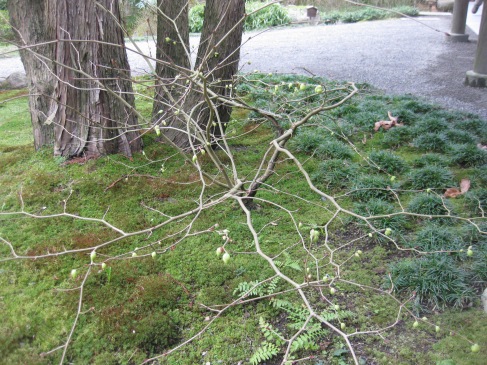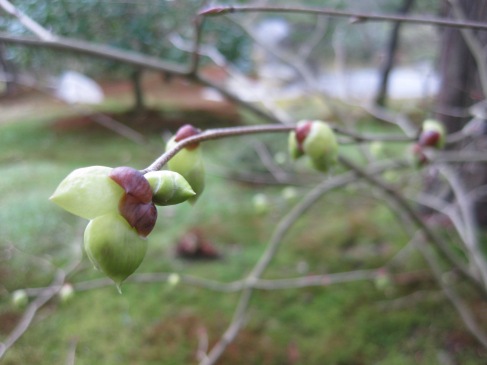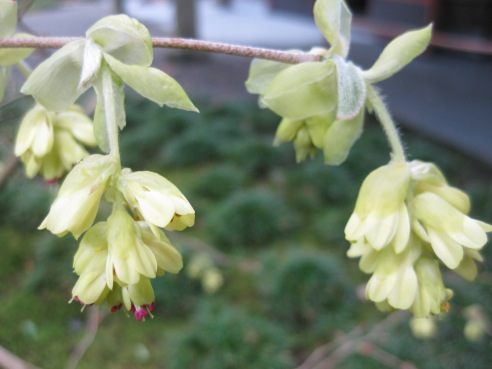Corylopsis • トサミズキ • 土佐水木 • tosa-mizuki
There is a write-up about corylopsis (a native of Japan and Taiwan) on this blog already – a mature plant in ZZW, posted about a year ago (3/26/12), but in a group-post containing 3 plants, before I thought to dedicate each post to just one plant. Here is a separate post on corylopsis in area B, just past the entrance gate, in front of what was supposed to be a gift shop (currently housing historical visual interpretives about the garden) – this is a young, airy and gracious little plant, and I caught it in bud stage – will update this post when it comes to a full bloom.
From WSU Clark County Extension, PNW Plants: Buttercup Winterhazel is named for the profusion of fragrant pastel buttery-yellow flowers it produces in late March before the leaves emerge. A true herald of spring!
Morphology: This is a deciduous multi-stemmed shrub that grows in a spreading fashion to 6’ tall and as wide. It bears simple leaves which are arranged in an alternate fashion. The leaf blades are broadly ovate and have a cordate base. At maturity they are 2”-3” long and have bristly serrated edges. The veins of the leaves are deeply sunken making them appear wrinkled. During the summer the leaves are blue-green in color.
Attractive, pastel yellow flowers form in late winter. These are ½” long, in hanging clusters of 3 to 5 flowers. […]
From hortipedia: […] Naming – Corylopsis pauciflora was described in 1835 by Philipp Franz von Siebold and Joseph Gerhard Zuccarini. The name is considered as validly published.
Taxonomy – The Buttercup Winter Hazel is a species in the genus Corylopsis (winter hazel) which contains 30 species and belongs to the family of the Hamamelidaceae (Witch-hazel Family). […]




